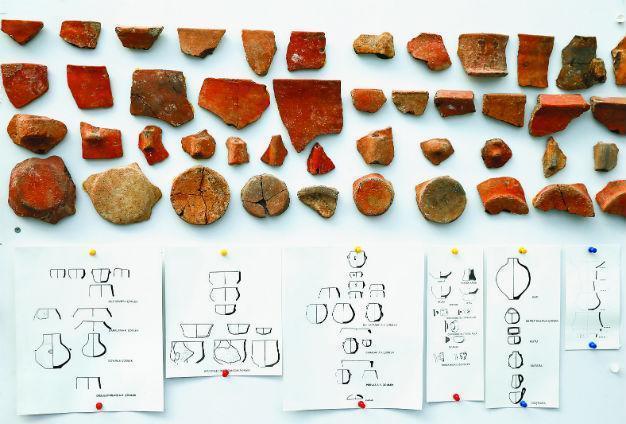The past is red, Neolithic findings suggest
İZMİR – Anadolu Agency

AA photo
The ancients of the Neolithic era 8,500 years ago might have been “painting the town red” a whole lot earlier than over-exuberant revelers of the 1800s, according to new findings from the Yeşilova Mound in İzmir, which suggest red was the favorite color of the prehistoric inhabitants and was used extensively.“Ancient people … particularly liked red and pink,” said the head of the Yeşilova Mound excavations, Professor Zafer Derin.
Derin said the color red was identified with “fire” and “blood” 8,500 years ago, adding that it also meant “peace” and was used on the walls and ceilings of houses.
He said they also believed that red was used in dresses, although they had not yet found any evidence to support their hypothesis. “We think that they painted their bodies with red when they were sick. Red was acquired from hematite, which is a natural substance. They learned that natural hematite sources gave the color red.”
The professor said they had reached findings related to two different periods of İzmir, peace and war times.
He said that they had found many things such as pots, pans and stone tools, and tried to determine facts about daily life thousands of years ago with those materials.
“We try to reveal people’s lives by examining them. We want to learn about the production of these tools, the groups that these people had relations with and their trade activities,” he said.
Fashion seen in jewelry, pots
Derin said they learned about fashion mostly by examining pots and jewelry, adding that they had been able to find very small remains from clothes and weavings.
Pots and jewelry reflected fashion 8,500 years ago, just as similar objects do so today, he said.
“They produced jewelry using natural stones. This jewelry was very popular among women. The forms that they used in the production of pots and pans were a part of fashion, too, because we see the same forms in very different places. This is also the same for colors,” he said.
The people in the Neolithic era had intensive cultural relations, Derin said. “They made trades with the Cappadocia region and the Greek islands.”
Meanwhile, researchers at Boston University also recently detected DNA samples in a 5,000-year-old temporal bone discovered at the Yeşilova Mound. The finding is expected to provide important clues related to Anatolian history.
















